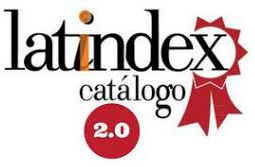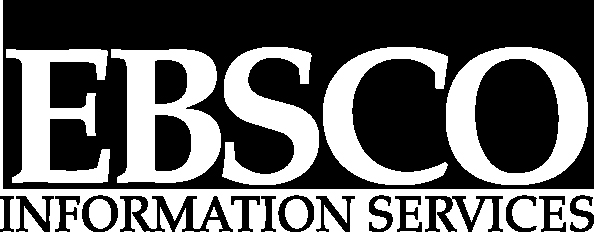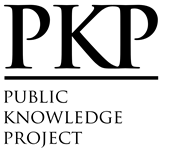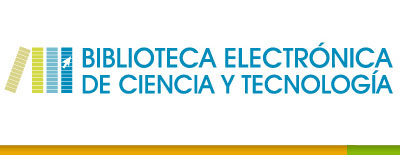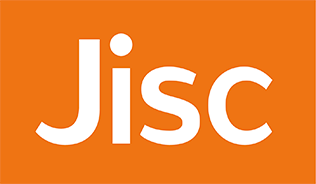Los características y el comportamiento de los consumidores de libros electrónicos
El mercado griego como un estudio de caso
Resumen
En la industria editorial, la innovación tecnológica podría jugar un rol fundamental en la entrega de contenidos. Las nuevas tecnologías introducen novedosos desafíos y obligan a replantear el negocio de las editoriales y sus planes de desarrollo, distribución y marketing. Aunque el modelo actual de edición de libros no corre ningún riesgo, ya que la base del modelo económico de la industria sigue siendo esencialmente la misma, la publicidad y el marketing han cambiado, al haberse modificado el ambiente competitivo y ampliado los procesos de producción y distribución. Las industrias editoriales deben adoptar los avances tecnológicos. Si no lo hacen, en un ambiente tan implacable, demandante y competitivo, fracasarán. A pesar de la apertura de los mercados en línea, en las editoriales hay preocupación por cómo la lectura en pantalla podría remplazar a las prácticas tradicionales, y se duda de cuan positiva sería la reacción del público. Mientras tanto, la investigación empírica da cuenta de la demanda de libros electrónicos. A través de un análisis conjunto, resalta el debate teórico en torno al comportamiento de los consumidores y lectores de productos electrónicos, y ofrece sugerencias prácticas para que las editoriales respondan estratégicamente ante el nuevo ambiente digital.
Descargas
Citas
Agarwal, S. & Teas, R. K. (2001). Perceived value: mediating role of perceived risk. Journal of Marketing Theory and Practice, 9 (4), p. 1-14.
Albarran, A. (2010). The transformation of the media and communication industries. Pamplona: Ediciones Universidad de Navarra. (Media markets monographs; 11).
Andrews, L.; Kiel, G.; Drennan, J.; Boyle, M. V. & Weerawardena, J. (2007). Gendered perceptions of experiential value in using web-based retail channels. European Journal of Marketing, 41 (5/6), p. 640-658.
Antioco, M. & Kleijnen, M. (2010). Consumer adoption of technological innovations: Effects of psychological and functional barriers in a lack of content versus a presence of content situation. European Journal of Marketing, 44 (11/12), p. 1700-1724.
Bolton, R. N. & Drew, J. H. (1991). A multistage model of customer’s assessments of service quality and value. Journal of Consumer Research, 36, p. 171-186.
Brown, M.; Pope, N. & Voges, K. (2003). Buying or browsing? An exploration of shopping orientations and online purchase intention. European Journal of Marketing, 37 (11/12), p. 1666-1684.
Brown, S. & Patterson, A. (2000). Imaging marketing: art, aesthetics and the avant- garde. London: Routledge.
Burke, R. R. (1998). Real shopping in a virtual store. In: Bradley, S. P. & Nolan, R. L. (eds.). Sense and respond: capturing the value in the network era. Boston: Harvard Business School.
Bustamante, E. (2004). Cultural industries in the digital age: some provisional conclusions. Media, Culture & Society, 26 (6), p. 803-820.
Chan-Olmsted, S. M. (2004). Introduction: Traditional media and the internet: the search for viable business models. International Journal on Media Management, 6 (1-2), p. 2-3.
Dizard, W. (1985). The coming information age. New York: Longman.
Darley, W. M. & Smith, R. E. (1995). Gender differences in information processing strategies: an empirical test of the selectivity model in advertising response. Journal of Advertising, 24 (1), p. 41-56.
Dennis, C.; Merrilees, B.; Jayawardhena, C. & Wright, L. T. (2007). E-consumer behaviour. European Journal of Marketing, 43 (9-10), p. 1121-1139. Fowler, F. J. (2002). Survey research methods. 3rd ed. Thousand Oaks, CA: Sage.
Grant, R.; Clarke, R. J. & Kyriazis, E. (2013). Modelling real-time online information needs: a new research approach for complex consumer behaviour. Journal of Marketing Management, 29 (7-8), p. 950-972.
Jiang, P. & Rosenbloom, B. (2005). Customer intention to return online: price perception, attribute-level performance, and satisfaction unfolding over time. European Journal of Marketing, 39 (1-2), p. 150-174.
Klerck, D. & Sweeny, J. C. (2007). The effect of knowledge types on consumer perceived-risk and adoption of genetically modified foods. Psychology and Marketing, 24 (2), p. 171-193.
Goode, M. H. & Harris, L. C. (2007). Online behavioural intentions: an empirical investigation of antecedents and moderators. European Journal of Marketing, 41 (5-6), p. 512-536.
Kleijnen, M. H. P. & Andreassen, T. W. (2005). Image congruence and the adoption of service innovations. Journal of Service Research, 7 (4), p. 343-359.
Konstantinova, R. (2010). Online strategies of the Bulgarian economic newspapers. EMMA Conference paper. London.
Korgaonkar P. K. & Wollin, L. D. (1999). A multivariate analysis of web usage. Journal of Advertising Research, 2, p. 10-17.
Lee, L. (2005). Young people and the internet: from theory to practice. Young: Nordic Journal of Youth Research, 13 (4), p. 315-326.
MacInnes, I.; Kongsmak, K. & Heckman, R. (2005). Impediments to digital distribution for software and books. International Journal on Media Management, 7 (1), p. 75-85.
McQuail, D. (2005). Mass communication theory. 5th ed. London: Sage.
Mejtoft, T. (2006). Strategies for successful digital printing. Journal of Media Business Studies, 3 (1) p. 53-74.
National Book Centre of Greece (EKEBI) (1996). The economic and structural characteristics of publishing business in Greece [online]. Retrieved 14 September, 2009, Available in Greek: http://www.ekebi.gr/frontoffice/portal.asp?cpage=node&cnode=423
National Book Centre of Greece (EKEBI) (2009). The book market in Greece. 5th rev. ed. Athenas: EKEBI (in Greeek).
Perrault, W. D. & Frederick, R. (1974). Physical distribution service: a neglected aspect of marketing management. MSU Bussiness Topics 22, p. 37-45.
Porter, M. E. (1980). Competitive strategy: techniques for analyzing industries and competitors. New York: Free Press.
Prabhaker, P. R. (2000). Who owns the online consumer? Journal of Consumer Marketing, 17 (2), p. 158-171.
Robins, K. & Webster, F. (1988). Cybernetic capitalism: information technology, everyday life. In: Mosco, V. & Wasko, J. (eds.). The political economy of information. Madison, WI: University of Wisconsin Press.
Shaver, D. & Shaver, M. (2003). Books and digital technology: a new industry model. Journal of Media Economics, 16 (2), p. 72-86.
Shaver, D. & Shaver, M. (2009). Digital technologies and traditional media: it’s a new playing field. EMMA Conference. Paris, February 2009.
Solomon, M.; Bamossy, G. & Askegaard, S. (2002). Consumer behaviour: a European perspective. Harlow: Person Education.
Sultan, F. & Henrichs, R. B. (2000). Consumer preferences for Internet services over time: initial explorations. Journal of Consumer Marketing 17 (5), p. 386-402.
Teo, T. S. H. & Lim, V. K. G. (2000). Gendered differences in internet usage and task preferences. Behaviour and Information Technology, 29 (4), p. 283-295.
Vettraino-Soulard, M. C. (1998). Les enjeux culturels d’internet. Paris: Hachette.
Zinnbauen, M. (2003). E-newspaper: consumer demands on attributes and features. International Journal on Media Management, 5 (2), p. 127-137.
Ziv, N. D. (2002). New media as catalysts for change in the transformation of the book publishing industry. International Journal on Media Management, 4 (2), p. 66-74.
Derechos de autor 2015 Barbara Symeonidou, George Tsourvakas, Andreas Veglis, Kostas Agas

Esta obra está bajo licencia internacional Creative Commons Reconocimiento-NoComercial 4.0.
Los autores conservan los derechos de autor y garantizan a la revista el derecho de ser la primera publicación del trabajo. En caso de que puedan publicar en otra revista una traducción del artículo ya publicado en Austral Comunicación, se pide dejar constancia en la versión traducida sobre la publicación original.
La licencia utilizada es CC BY-NC-SA, que permite compartir (copiar y redistribuir el material en cualquier medio y formato) y adaptar (remezclar, transformar y construir sobre el material) bajo los siguientes términos: atribución (reconocer la autoría) y no comercial (no se puede utilizar el material para fines comerciales). Actualización: 1 de febrero de 2022.
Austral Comunicación permite al autor(es) retener los derechos de publicación sin restricciones.








